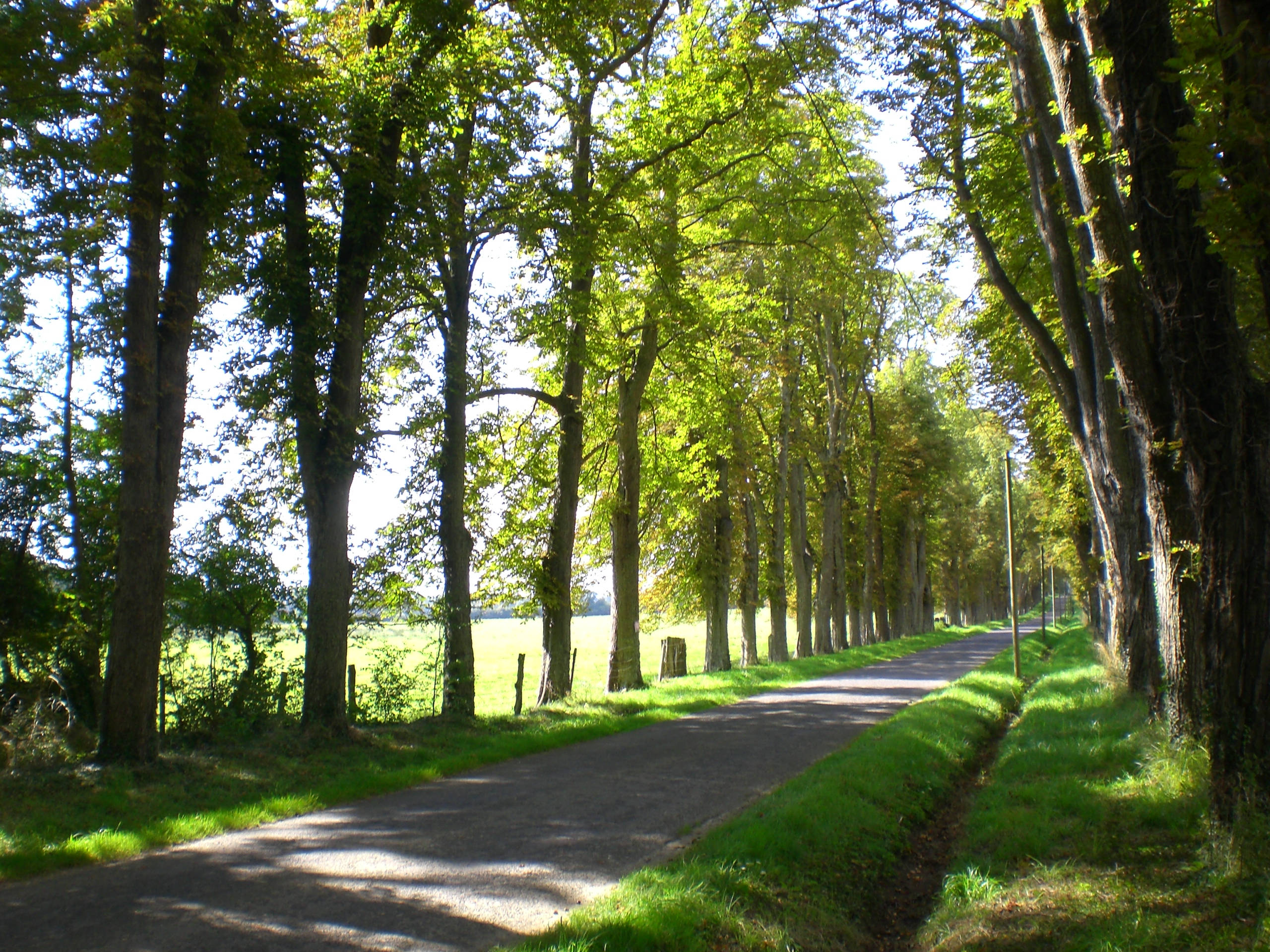|
Tallkrogen
Tallkrogen (Swedish language, Swedish for the "Pine Inn") is a suburban city district located south of central Stockholm, Sweden, but within the Stockholm Municipality. History In Stockholm, construction of small cottage areas intended for working-class families began at Olovslund and Pungpinan in 1927, a municipal initiative which quickly proved a success. About 90% of the construction costs, at the time roughly Swedish krona, SEK 10,000, could be financed by loans from the city, while the rest could be covered by the builder's own work. Soon, construction works had spread across various peripheral parts of the city, including Enskede-Årsta-Vantör, Enskede and Åkeshov, and in 1931 the former of these saw its thousandth cottage.Andersson, ''Stockholms årsringar'', "Tallkrogen - småstugor i stram planform", pp 145-147 Construction works at Tallkrogen started in 1933. Its plan contrasted both to the organic street networks of earlier Garden city movement, garden cities an ... [...More Info...] [...Related Items...] OR: [Wikipedia] [Google] [Baidu] |
Avenue (landscape)
In landscaping, an avenue (from the French language, French), alameda (from the Portuguese language, Portuguese and Spanish language, Spanish), or allée (from the French), is traditionally a straight path or road with a line of trees or large shrubs running along each side, which is used, as its Latin source ''venire'' ("to come") indicates, to emphasize the "coming to," or ''arrival'' at a landscape or architecture, architectural feature. In most cases, the trees planted in an avenue will be all of the same species or cultivar, so as to give uniform appearance along the full length of the avenue. The French term ''allée'' is used for avenues planted in parks and landscape gardens, as well as boulevards such as the ''Grande Allée'' in Quebec City, Canada, and ''Karl-Marx-Allee'' in Berlin. History The avenue is one of the oldest ideas in the history of gardens. An Avenue of Sphinxes still leads to the tomb of the pharaoh Hatshepsut. Avenues similarly defined by guardian stone ... [...More Info...] [...Related Items...] OR: [Wikipedia] [Google] [Baidu] |
Prefabrication
Prefabrication is the practice of assembling components of a structure in a factory or other manufacturing site, and transporting complete assemblies or sub-assemblies to the construction site where the structure is to be located. The term is used to distinguish this process from the more conventional construction practice of transporting the basic materials to the construction site where all assembly is carried out. The term ''prefabrication'' also applies to the manufacturing of things other than structures at a fixed site. It is frequently used when fabrication of a section of a machine or any movable structure is shifted from the main manufacturing site to another location, and the section is supplied assembled and ready to fit. It is not generally used to refer to electrical or electronic components of a machine, or mechanical parts such as pumps, gearboxes and compressors which are usually supplied as separate items, but to sections of the body of the machine which in the ... [...More Info...] [...Related Items...] OR: [Wikipedia] [Google] [Baidu] |
Athletics (sport)
Athletics is a group of sporting events that involves competitive running, jumping, throwing, and walking. The most common types of athletics competitions are track and field, road running, cross country running, and racewalking. The results of racing events are decided by finishing position (or time, where measured), while the jumps and throws are won by the athlete that achieves the highest or furthest measurement from a series of attempts. The simplicity of the competitions, and the lack of a need for expensive equipment, makes athletics one of the most common types of sports in the world. Athletics is mostly an individual sport, with the exception of relay races and competitions which combine athletes' performances for a team score, such as cross country. Organized athletics are traced back to the Ancient Olympic Games from 776 BC. The rules and format of the modern events in athletics were defined in Western Europe and North America in the 19th and early 20th century, an ... [...More Info...] [...Related Items...] OR: [Wikipedia] [Google] [Baidu] |
Viktor Balck
Viktor Gustaf Balck KVO KCMG (25 April 1844 – 31 May 1928) was a Swedish Army officer An officer is a person who has a position of authority in a hierarchical organization. The term derives from Old French ''oficier'' "officer, official" (early 14c., Modern French ''officier''), from Medieval Latin ''officiarius'' "an officer," f ... and sports personality who was one of the original members of the International Olympic Committee, president of the International Skating Union for 30 years, the driving force behind the Nordic Games, and who is often called "the father of Swedish sports". Military career Balck was born in Karlskrona, Sweden, and was a sailor in his youth. In 1861, he joined the Swedish War Academy at Karlberg Palace, Karlberg in Stockholm as an cadet, officer cadet of the Swedish Navy. After a while, he switched track to become a cadet for the Swedish Army, and was active in fencing and gymnastics. He stayed on as assistant gymnastics instructor at Karlberg ... [...More Info...] [...Related Items...] OR: [Wikipedia] [Google] [Baidu] |
Pehr Henrik Ling
Pehr Henrik Ling (15 November 1776 in Södra Ljunga – 3 May 1839 in Stockholm) pioneered the teaching of physical education in Sweden. Ling is credited as the father of Swedish massage. Early life Ling was born in Södra Ljunga, Småland in 1776. His parents were Lars Peter Ling, a minister, and Hedvig Maria (Hedda) Molin. On his maternal side, Ling was the great-great grandson of the famous Swedish scientist Olof Rudbeck (1630–1702), who discovered the human lymphatic system. His family tree extends back to the sixteenth century and includes clergymen and peasants. His great grandfather apparently lived to 105 and had seventeen sons and two daughters. After graduating from the Växjö gymnasium in 1792, he studied theology at Lund University from 1793, completing his degree at Uppsala University in 1799. He then worked as a tutor for several families for the next three years. Travels In 1800, Ling left Sweden and lived abroad and traveled for seven years. He stud ... [...More Info...] [...Related Items...] OR: [Wikipedia] [Google] [Baidu] |
Stadium
A stadium ( : stadiums or stadia) is a place or venue for (mostly) outdoor sports, concerts, or other events and consists of a field or stage either partly or completely surrounded by a tiered structure designed to allow spectators to stand or sit and view the event. Pausanias noted that for about half a century the only event at the ancient Greek Olympic festival was the race that comprised one length of the stadion at Olympia, where the word "stadium" originated. Most of the stadiums with a capacity of at least 10,000 are used for association football. Other popular stadium sports include gridiron football, baseball, cricket, the various codes of rugby, field lacrosse, bandy, and bullfighting. Many large sports venues are also used for concerts. Etymology "Stadium" is the Latin form of the Greek word " stadion" (''στάδιον''), a measure of length equalling the length of 600 human feet. As feet are of variable length the exact length of a stadion depends on the ... [...More Info...] [...Related Items...] OR: [Wikipedia] [Google] [Baidu] |
Bromma
Bromma () is a borough (''stadsdelsområde'') in the western part of Stockholm, Sweden, forming part of the Stockholm Municipality. Bromma is primarily made up of Bromma Parish and Västerled Parish. The fourth largest airport in Sweden and the third largest of the airports close to Stockholm, the Stockholm Bromma Airport, was first built in Bromma in 1936. The south-eastern part of Bromma is one of the richest areas in Stockholm. Description The districts that make up the borough are Abrahamsberg, Alvik, Beckomberga, Blackeberg, Bromma kyrka, Bällsta, Eneby, Höglandet, Mariehäll, Nockeby, Nockebyhov, Norra Ängby, Olovslund, Riksby, Smedslätten, Stora Mossen, Södra Ängby, Traneberg, Ulvsunda, Ulvsunda Industriområde, Åkeshov, Åkeslund, Ålsten and Äppelviken. , the population is 59,229 in an area of 24.60 km², which gives a density of 2,407.68/km². Bromma is dotted with tiny forests, parks and lakes, including Judarskogen Nature Reserve, surrounding Lake J ... [...More Info...] [...Related Items...] OR: [Wikipedia] [Google] [Baidu] |
Norra Ängby , a place in Estonia
{{Disambiguation ...
NORRA or Norra may refer to: * Nordic Regional Airlines, a Finnish airline operating on behalf of, and formerly majority-owned by, Finnair * National Off-Road Racing Association, a desert off-road racing association * Norra (village) Norra (german: Kaltenborn) is a village in Järva Parish, Järva County in northern-central Estonia Estonia, formally the Republic of Estonia, is a country by the Baltic Sea in Northern Europe. It is bordered to the north by the Gulf o ... [...More Info...] [...Related Items...] OR: [Wikipedia] [Google] [Baidu] |
Garden City Movement
The garden city movement was a 20th century urban planning movement promoting satellite communities surrounding the central city and separated with greenbelts. These Garden Cities would contain proportionate areas of residences, industry, and agriculture. Ebenezer Howard first posited the idea in 1898 as a way to capture the primary benefits of the countryside and the city while avoiding the disadvantages presented by both. In the early 20th century, Letchworth, Brentham Garden Suburb and Welwyn Garden City were built in or near London according to Howard's concept and many other garden cities inspired by his model have since been built all over the world. History Conception Inspired by the utopian novel ''Looking Backward'' and Henry George's work ''Progress and Poverty'', Howard published the book '': a Peaceful Path to Real Reform'' in 1898 (which was reissued in 1902 as ''Garden Cities of To-morrow''). His idealised garden city would house 32,000 people on a site of , pl ... [...More Info...] [...Related Items...] OR: [Wikipedia] [Google] [Baidu] |
Swedish Language
Swedish ( ) is a North Germanic language spoken predominantly in Sweden and in parts of Finland. It has at least 10 million native speakers, the fourth most spoken Germanic language and the first among any other of its type in the Nordic countries overall. Swedish, like the other Nordic languages, is a descendant of Old Norse, the common language of the Germanic peoples living in Scandinavia during the Viking Era. It is largely mutually intelligible with Norwegian and Danish, although the degree of mutual intelligibility is largely dependent on the dialect and accent of the speaker. Written Norwegian and Danish are usually more easily understood by Swedish speakers than the spoken languages, due to the differences in tone, accent, and intonation. Standard Swedish, spoken by most Swedes, is the national language that evolved from the Central Swedish dialects in the 19th century and was well established by the beginning of the 20th century. While distinct regional varieties ... [...More Info...] [...Related Items...] OR: [Wikipedia] [Google] [Baidu] |







